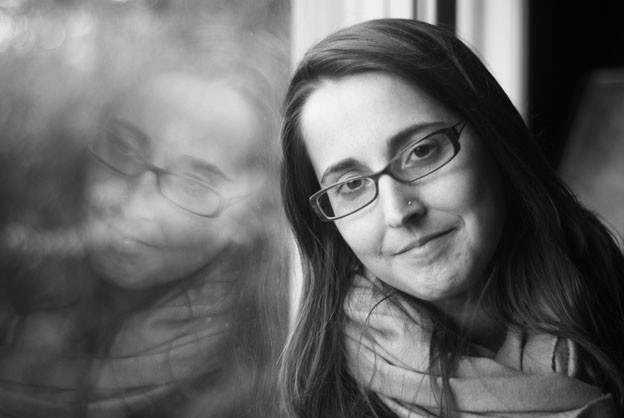Uses of the useless
Against the division of poetry and scholarship

Contemporary so-called “innovative” or “experimental” poetry’s fascination and engagement with the theoretical and the critical owes a lot to the Language poets, who, though not the first to approach the composition of poetry as an intellectual enterprise, did offer what Marjorie Perloff characterizes as a “rapprochement between poetry and theory” that could serve as an alternative to the increasingly anti-intellectual creative writing classroom of the 1970s. And while Charles Bernstein, talking about the poetics program at SUNY-Buffalo, avers that “the practice of poetics [is] something distinct from, even though intersecting with, the practice of poetry,” he also argues that poetry and poetics may “enhance” one another. Indeed, we can easily name many poet-scholars for whom this seems to be true.
Let’s start with Lyn Hejinian. In her critical prose, Hejinian writes about the sociality of language and takes as a given the idea that poetry is a site of, in fact the language of,“inquiry” — philosophical, political, and theoretical. So, while Hejinian turns to the essay to argue the point, the point is that poetry itself does theoretical work — a kind of theoretical work that perhaps cannot be done in the space of poetics. An excerpt from My Life is instructive:
A pause, a rose, something on paper
A moment yellow, just as four years later, when my father returned home from the war, the moment of greeting him, as he stood at the bottom of the stairs, younger, thinner than when he had left, was purple — though moments are no longer so colored.
At first we might encounter this as the typical material of poetry: memory, personal history, aesthetic detail — the narrative bound not by the telling of a story, but by the creation of a mood. But upon closer examination, we see that this is a poem that theorizes temporality in a peculiar way: here time is not linear, but associative (The speaker’s father comes home “younger” though he is undoubtably older); not cerebral, but sensory (the moment is colored purple). And she “begins” not with something, but with nothing — a “pause” acts as our entry into this text, so at the very moment of first encounter with the poem, we are asked to wait; time stops; the poem stops before it has begun. We could argue that it is up to the critic to derive the theory from the object of analysis — Hejinian’s poem — but I would argue, instead, that the theoretical heavy lifting is done by the poem itself, insofar as it gives us a context in which to perceive the modes of memory, temporality, and perception that would be imperceptible in the space of poetics alone: instead you need, to borrow Hejinian’s phrase, “something on paper”: the poem.
And if, as I have been arguing, some poetry is actually a form of poetics scholarship, then we should not be surprised at the rise of hybrid essay forms, which try to bridge the gap between poetry and poetics. Indeed, the fact of these hybrid forms in and of themselves suggest that poetry is doing a kind of work that scholarship cannot do, else why bring one into the realm of the other? In Juliana Spahr’s hybrid essay “Spiderwasp or Literary Criticism,” the very title of the piece asserts the exchangeability (though not interchangeability) of what we call “literary criticism” and a poetic/metaphoric language, here represented by the “spiderwasp.” The more traditional essayistic portion that runs down the right side of this piece dissects the relationship between certain women poets and the literary traditions with which they are associated, arguing that while these relationships are relevant they are not definitive. However, on the left side there is a fragmentary story of a pepsis wasp laying its eggs in a tarantula and a person recounting a sexual betrayal. A third kind of story takes place in the footnotes. “This is the story of metaphor,” Spahr writes, asserting at once that the “story” of the spiderwasp is metaphorical, the “story” of literary history is metaphorical, and that the metaphor is the story. The three threads of thinking — metaphorical, historical, tangential — only make their case in combination — each kind of critical labor is necessary to the argument. As Brenda Hillman points out in How2, “neither complete fragment nor complete discontinuity is accurate. Only both are accurate.”
If Lyn Hejinian is right, and poetics is an art, let us hold it to artistic standards. Let’s remove the hyphen between poet-scholar, let’s be poelars and scholets, poetics emerges from the poem, poems emerge from scholarship — why not all at once?
A manifesto presented at the Fall Convergence on Poetics Conference, 2012, at University of Washington–Bothell.
Five-pointed star. Starfish arm severed. Mislaid limbs, the lyric is
Of the animal kingdom
Poetics and poetry are not dialogical but dialectical, we can see where
One is only when we look at the other.
Horse’s hooves stapled with iron. A quatrain of crescent moons.
Storm break, murmur of wounds. Repetition. Your name, and yours.
When we speak of a theoretical paradigm there are no equivalencies.
A paradigm is a context for contexts.
Nervetree, procedure. The belt from which we have removed every hole,
A drift of white, like a bandage in the air. cedarbark arrow, moss.
A poetic is a poem from which poems are made. A poem is the terra firma of a poetics.
A tautology is a very useful thing.
Pine-scented manifesto. Exuberance. The shape of a letter
Opened like a letter. An electric Borges. A promise.
An ontological position is claimed when we read aloud. A poem is a set
Of instructions for being in the world, briefly.
Everybody put your pencils down, everybody pick them up.
There is no concluding paragraph, no concluding poem, only
a cloud in the room where the two make weather.
Edited by Margaret Ronda